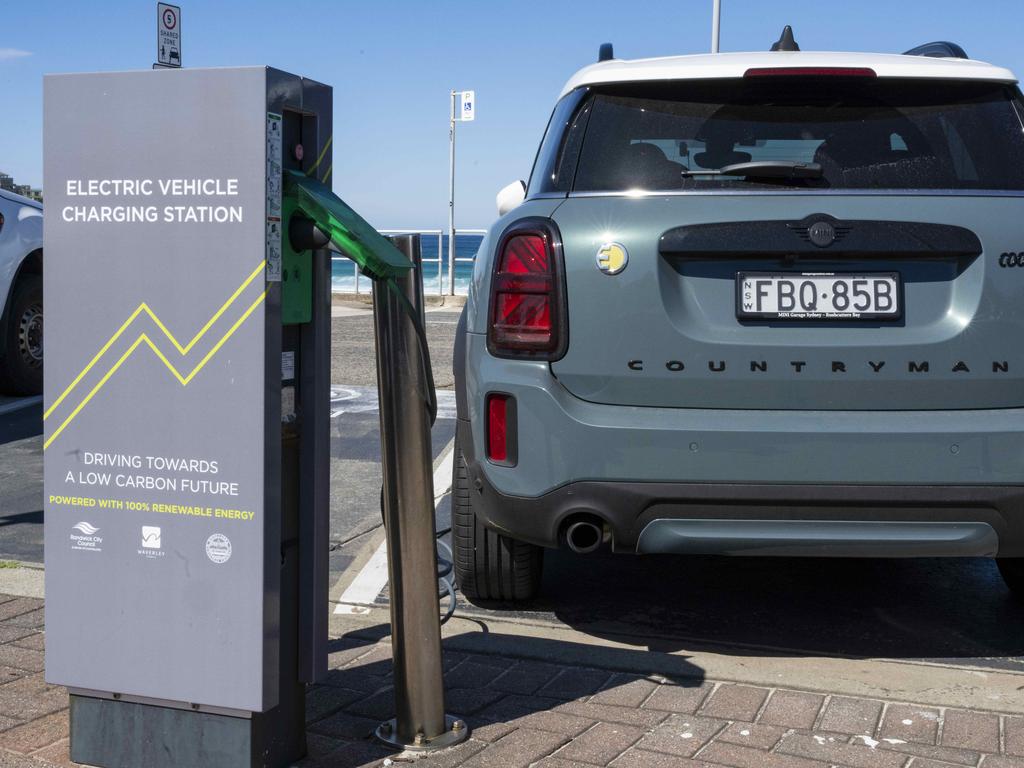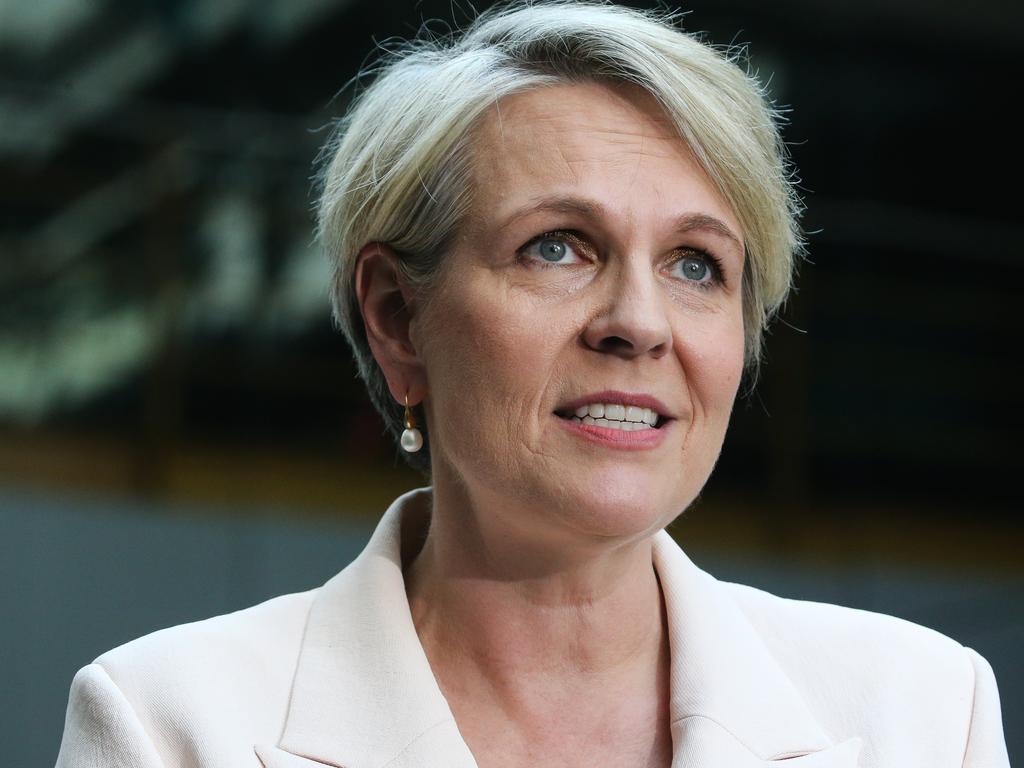Climate Change Authority reveals how Australia should reach Net Zero
The car you drive, the kitchen you cook in, even the meat you eat ... all could be set to change under the Climate Change Authority’s proposals for reaching Net Zero.
No petrol cars, no gas in the home, no nuclear power, and Skippy on the plate: the Climate Change Authority has detailed how everyday Australias will need to live if the country has any hope of reaching net zero by 2050.
But that goal of slashing greenhouse gas emissions, supported by both major political parties, comes with massive costs in every sector of the economy, advice from the Authority released on Wednesday suggests.
The Authority, headed up by the former NSW Climate Change and Energy Minister Matt Kean, provided the advice as the government seeks to develop six “sectoral pathways” to guide Australia to net zero.
“The Authority has charted a course for how Australia can decarbonise by 2050,” Mr Kean said.

Federal Climate Change and Energy Minister Chris Bowen said the Authority proposals were “not recommendations” but “information and analysis” for government, business and the community.
The Authority review shows the heavy lifting in terms of emissions reductions will come from the electricity, building and agriculture sectors, with smaller cuts coming from heavy industry and transport, offset by massive efforts to capture more carbon in land use arrangements.
But those reductions will necessitate controversial measures, like banning gas connections in family homes, and ensuring all new light car sales are electric vehicles as soon as 2040, the Authority papers argue.

Further cuts could be made by eating more lab-grown meat as well as moving away from beef and lamb, towards animals “with a lower emissions intensity, such as chicken, pork and kangaroo,” the Authority stated.
Their advice also kiboshed a Coalition plan for Australia to adopt nuclear power as part of its energy mix, stating that an “estimated lead time of 15 to 20 years before operation” meant the technology “cannot make a timely contribution” towards the net zero goal.
Mr Bowen seized on the point.
“The Climate Change Authority also confirms … that in its independent, expert view, nuclear could not replace ageing coal capacity fast enough to support Australia’s ability to reach its 2050 target,” he said.
But the Shadow Minister for Climate Change and Energy, Ted O’Brien, said by dismissing nuclear, the CCA “ignores the one proven technology which has successfully decarbonised economies at speed the world over”.
He also criticised the report for “fail(ing) to explain how much it will cost to adopt these pathways and who will pay”.

How the report was received
Some industries are already pushing back against the report, arguing it is based on flawed data and assumptions.
The CCA stated that the “complete electrification of buildings is the optimal decarbonisation approach” but Steve Davies, chief executive of the Australian Pipelines and Gas Association, said homeowners “should have choice as to how they reduce emissions, not be forced into a single option.”
“The CCA’s view on decarbonisation of buildings is based on subpar information from the CSIRO AusTIMES model,” he said.
“The CSIRO continues to use illogically high costs for biomethane, up to 600 per cent higher than those used by the Australian Renewable Energy Agency – meaning electrification always comes out best.”


National Farmers’ Federation President David Jochinke said the report was “balanced and detailed” but warned of “significant concerns” with its proposal to massively expand the national forestry estate to 5 million hectares.
“Achieving offsets through land reallocation on this scale would have a profound and detrimental impact on food and fibre production,” he said.
He also hit back at suggestions that Australians should be encouraged to change their dietary preferences.
“The NFF strongly opposes this notion, maintaining that a balanced and nutritious diet includes red meat,” Mr Jochinke said.
“The idea that alternative animal proteins could replace red meat in Australia’s unique rangelands is severely misguided.”


Environment groups including the Australian Conservation Foundation and the Climate Council welcomed the review, saying it showed emissions cuts could be achieved even faster than currently proposed.
Climate Council economist Nicki Hutley said the report “calls out government, business, communities and households, so I think the pressure to cut climate pollution is on all of us”.
“There’s definitely no free pass for industry,” she said.
Here are some of the proposals put forward by the Authority.
TRANSPORT
More EVs: “Sales of new light vehicles reaching 100 per cent electric ahead of 2040 can ensure there are minimal light vehicle emissions by 2050,” the Authority stated. But in order to achieve this, EVs will need to reach price parity with conventional vehicles by 2030, and the rollout of charging stations will need to massively increase. The paper quoted a Tesla submission, which claimed the installation of EV charging facilities in Australia took over a year, compared to six-eight weeks in other countries. The paper also noted that only three-quarters of Australian households have a garage or carport.

More hydrogen vehicles: “Hydrogen is a promising technology for decarbonising some articulated trucks, some heavy rigid trucks and long-haul buses” as hydrogen-powered vehicles can “carry heavier payloads without sacrificing as much range as a battery electric vehicle,” the Authority stated.
Low emissions flying: Domestic aviation’s emissions could be slashed to about 16 per cent of what they currently are by 2050, primarily through the use of Sustainable Aviation Fuels. But this comes with a cost: these fuels can be as much as four and a half times more expensive than traditional fuels.

AGRICULTURE
Modest cuts: The Authority quoted CSIRO modelling which suggested emissions in the agricultural sector will remain stable throughout the 2030s and decrease by just 20 per cent by 2050.
Low-emissions livestock: Seaweed feed additives could lower the emissions from farting and burping livestock (called “enteric fermentation”) but there are problems with delivery. Such additives can be fed to dairy cattle on a daily basis, but it’s not possible for rangeland pasture, “where individual animals may not be seen for multiple years”.

Farm improvements: Changes to manure management on farms through the use of covered lagoons and anaerobic digesters could lead to lower emissions, as could the deployment of fertilisers with nitrification inhibitors. These are commercially available but are more expensive than conventional fertilisers.
EVs on the land: Diesel use in the regions will need to be curtailed massively by 2035, with a move towards electric vehicles and electric farm machinery.
You are what you eat: Encouraging plant-based diets, lab-grown protein and types of meat with a smaller carbon footprint should all be encouraged, the Authority paper stated. Pork, chicken and kangaroo are on the menu; beef and lamb are off.
More trees: There are currently 2.1 million hectares of planted forests in Australia, but the country will need an additional 3 million hectares to help offset other sectors of the economy which are hard to abate.
BUILT ENVIRONMENT
Gas is out: Victoria and the ACT have already banned connections to the fossil fuel gas network for new buildings, but this should be expanded across the country, the Authority argued. “The Authority is of the view that the long-term complete electrification of buildings is the optimal decarbonisation approach and governments should develop strategies to efficiently and equitably realise this,” the paper stated. Electrifying a house can cost between $8000-$15,000, and as much as $5 million for a commercial building.

Energy efficient homes: Australian homes are poorly insulated and should be refurbished to bring them up to 6-star standard. According to a study quoted by the Authority, this would cost between $9000-$18,000 for a semi-detached house and $42,000-$63,000 for a detached house.
Think smaller: Australia has some of the largest houses in the world, averaging 84m2 per person, the paper stated – but building smaller with less materials could also help lower emissions.
ELECTRICITY AND ENERGY
Coal out, gas remains: Coal-fired power will be retired completely by the 2030 but gas “will play an ongoing role in the electricity system as a firming technology,” the report stated.

Solar panels: Already a world leader in solar panel home use, the paper posits further growth for home solar and batteries, even suggesting solar could become a mandatory requirement for all new builds.
No nukes … for now: The paper ruled out nuclear power on the grounds of cost and the length of time a local industry would take to establish, but leaves open the option for future adoption. “A future dramatic cost reduction in new build nuclear plants would necessitate a re-evaluation of this technology for deployment in Australia,” the Authority stated.
RESOURCES
Hard to abate: While some emissions savings could be made by moving away from diesel power towards renewables in the resources sector, many parts of mining operations will remain a challenge. Emissions from offshore oil and gas facilities, and from open-cut coal mines, will remain unabated by 2050, according to the Authority.

Capturing carbon: The report backs carbon capture and storage technologies for the gas industry, believing it could abate about a quarter of the sector’s emissions by 2030.
The storage of carbon dioxide, including beneath the seabed, could be a new export industry.
Last year the federal parliament passed a bill introduced by Environment Minister Tanya Plibersek to amend the sea dumping act, which she said allowed Australia to “start regulating both the import and the export of (carbon dioxide) streams for sequestration into sub-seabed geological formations.”
Big earners: Liquefied natural gas and thermal coal are Australia’s second and third-largest exports. The report said Australia will need to “adjust its export mix by ramping up exports that will be in demand in a net zero global economy” and work “with trade partners to manage an orderly transition away from fossil fuels.”
INDUSTRY AND WASTE

Big business, small number: Over 50 per cent of emissions from the industry and waste sector come from just 20 major facilities – all of which are covered by the government’s Safeguard Mechanism.
Range of solutions: Electrification of facilities and processes, energy efficiency measures and carbon capture use and storage technologies will all assist in cutting emissions. Hydrogen is also expected to play a role in providing the energy source for the extremely high heat needed in many industrial processes.
Additional reporting by John Rolfe
More Coverage
Originally published as Climate Change Authority reveals how Australia should reach Net Zero
Read related topics:Explainers




